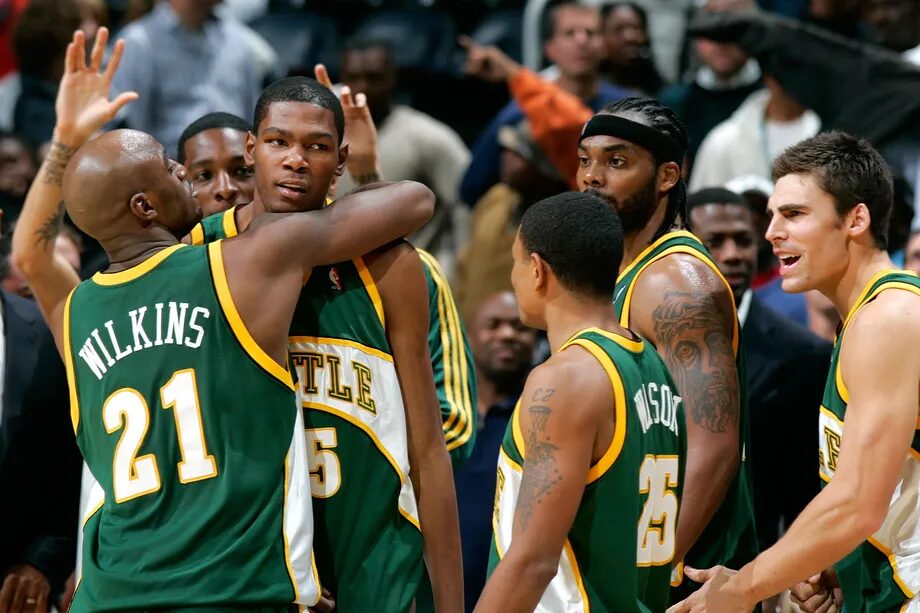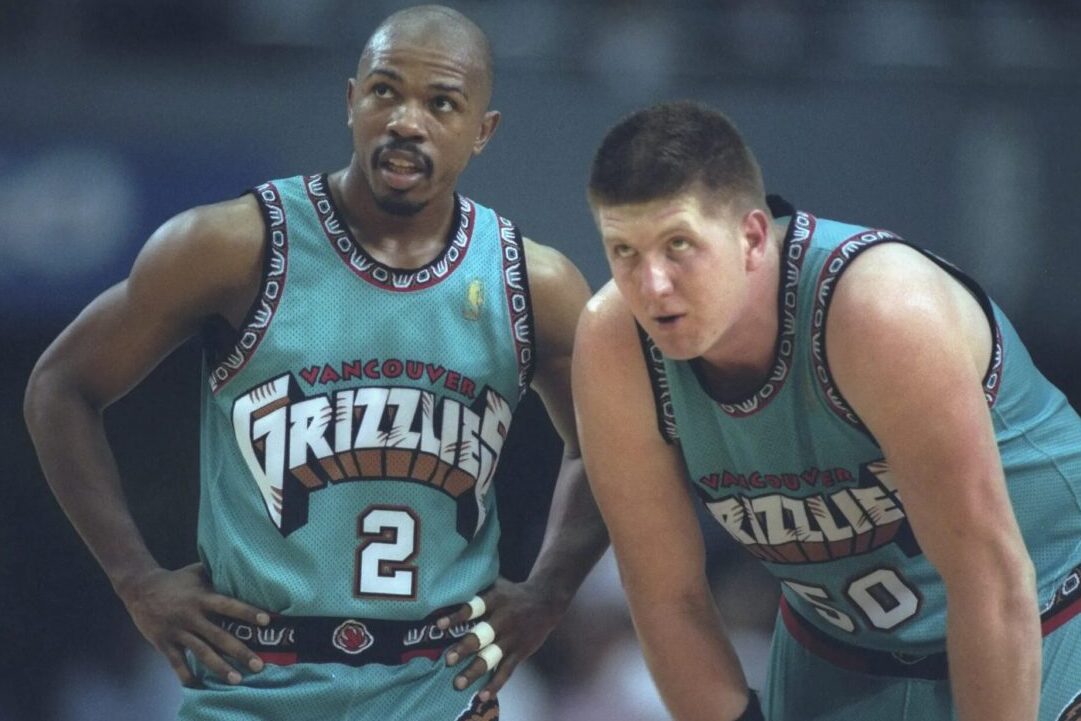In the world of pro basketball, the NBA is a big deal. Fans and experts are asking a big question: Will the NBA add new teams?
This article looks at the exciting chance of new teams joining the NBA. Cities like Las Vegas, Seattle, Kansas City, and Mexico City are getting a lot of attention.
Adding new franchises is a big step for the NBA. It’s about making the league even better and reaching more fans around the world. Let’s dive into the world of NBA expansion and see what it could mean for the future of basketball.

Potential Cities For NBA Expansion
As the NBA contemplates expansion, several cities have emerged as frontrunners, each with its unique appeal and challenges.
Las Vegas:
Known as Sin City, Las Vegas has become an NBA hub without hosting its basketball team. The city annually hosts the NBA Summer League, Team USA events, and previously the G League Showcase.
With the Oak View Group planning an NBA-ready arena and the federal funding for a high-speed rail from Los Angeles, Las Vegas is a strong contender.
The city’s growing sports profile, highlighted by the Golden Knights from the NHL (one of the major professional sports leagues), adds to its appeal.
Seattle:
Seattle’s longing for an NBA expansion team has been palpable since the SuperSonics‘ departure to Oklahoma City.
As the largest U.S. media market without an NBA team, Seattle boasts significant economic strength, being home to tech giants like Amazon and Microsoft.
The city’s recent acquisition of the NHL team Seattle Kraken and the NBA-ready Climate Pledge Arena further strengthen its case.

Mexico City:
The NBA’s interest in Mexico City has grown, especially with the success of the Capitanes, its G League franchise.
The city’s large market and potential to boost NBA sales in Mexico make it an intriguing option. However, concerns about player security and currency exchange remain challenges.
Kansas City:
While not explicitly mentioned by NBA Commissioner Adam Silver, Kansas City has often been cited in NBA expansion discussions. With a rich sports history and existing infrastructure, it could be a viable option for the NBA.
Each city offers unique opportunities for the NBA’s growth, both domestically and internationally. The decision will hinge on various factors, including market potential, infrastructure, and the league’s strategic goals.

Understanding NBA Expansion
The NBA has a rich history of expansion, reflecting its growth and evolution since its inception in 1946.
Initially starting with 11 teams, the league has undergone several expansions, contractions, and relocations, leading to its current lineup of 30 teams.
Early Years (1946-1966)
This period saw the NBA’s first substantial growth, with notable franchises like the Philadelphia Warriors (now the Golden State Warriors) and Minneapolis Lakers (now the Los Angeles Lakers) joining the league. However, the league fluctuated in size, at one point reducing to just 8 NBA teams.
Expansion Era (1966-1980)
A significant phase in NBA history, this era witnessed the introduction of 14 of the current 30 teams.
The Chicago Bulls joined in 1966, followed by teams like the Phoenix Suns and Milwaukee Bucks.
The merger with the American Basketball Association (ABA) in 1976 added 4 more teams, including the San Antonio Spurs and Indiana Pacers.

Modern Expansion (1988-2004)
The modern era of expansion began in the late 1980s and continued into the early 2000s, marking a significant period in the league’s history. This era saw the NBA grow in both size and global influence.
1988-1989 Expansion
The Charlotte Hornets and Miami Heat were introduced in 1988, followed by the Minnesota Timberwolves and Orlando Magic in 1989. These expansions were strategic, targeting growing markets in the United States and expanding the league’s national footprint.
Canadian Expansion (1995)
A landmark moment in NBA history was its expansion into Canada in 1995 with the addition of the Toronto Raptors and Vancouver Grizzlies (who later relocated to Memphis in 2001).
This move not only increased the league’s team count but also represented its first foray outside the United States, highlighting the NBA’s growing international appeal.

New Orleans Hornets (2002)
The most recent expansion team, the New Orleans Hornets (now the Pelicans), was established in 2002. This expansion was part of the NBA’s strategy to bring professional basketball to new, enthusiastic markets.
Rebranding and Relocations
The Charlotte Bobcats were introduced in 2004, following the relocation of the original Charlotte Hornets to New Orleans. In 2014, the Bobcats rebranded to reclaim the history of the Hornets, with the New Orleans team recognized as a new franchise founded in 2002.
These modern expansions were not just about adding teams; they were strategic moves to capture new markets, embrace globalization, and enhance the league’s competitive landscape. As the NBA grows, these expansions have set a precedent for how the league can evolve and adapt to new opportunities.

Criteria for an Expansion Franchise
The expansion of the NBA is a complex process that involves several key criteria. These criteria have evolved over the years, reflecting the league’s strategic growth and changing market dynamics.
1. Market Size and Potential
A primary consideration is the size and potential of the market in the prospective city. The NBA looks for markets that can support a team financially and have a strong fan base. This includes evaluating the population size, economic stability, and the presence of a dedicated sports culture.
2. Arena and Facilities
The availability of a modern, well-equipped arena is crucial. The NBA requires facilities that meet its standards for hosting games and accommodating fans. This includes considerations for seating capacity, amenities, and the potential for revenue generation through concessions and other in-arena activities.
3. Ownership and Financial Stability
Prospective team owners must demonstrate financial stability and the ability to support a team long-term. This includes the financial resources for initial investment and ongoing operations, as well as a commitment to the team and the community.

4. Geographic Considerations
The geographic location of the new NBA franchise is also important. The NBA considers how the addition of a new team in a particular location will impact travel schedules, regional rivalries, and the overall balance of the league’s divisions and conferences.
5. Impact on Existing Teams
The potential impact on existing teams is a key factor. This includes considerations of market overlap, competitive balance, and revenue sharing. The league assesses how a new team will fit into the current ecosystem without negatively affecting the existing teams.
6. Support from Local Government and Community
Support from local government and the community is essential. This can include financial incentives, infrastructure improvements, and a demonstrated enthusiasm for hosting a team. The NBA looks for cities where there is a collaborative effort to welcome and support a new franchise.
7. Long-term Growth Prospects
Finally, the NBA evaluates the long-term growth prospects of the market. This includes future economic projections, population growth trends, and the potential for the market to evolve into a strong basketball hub.
These criteria ensure that any new NBA team is set up for success, both on and off the court, and that the expansion aligns with the league’s broader strategic goals.

Steps In Forming An Expansion Franchise
1. Expression of Interest: The process starts with an interest declaration from a potential ownership group or city.
2. Market and Ownership Evaluation: The NBA assesses the market size, fan base, and economic viability, alongside vetting the ownership group’s financial stability and commitment.
3. Securing an Arena: A suitable arena meeting NBA standards is essential for hosting games and accommodating fans.
4. NBA Board of Governors Approval: The proposal for an expansion team is voted on by the NBA Board of Governors, consisting of existing team owners.
5. Expansion Fee Payment: Approved franchises pay a league expansion fee, distributed among existing NBA teams.
6. Expansion Draft Participation: The expansion team selects unprotected players from other teams to build its roster.
7. League Integration: The team is integrated into the NBA’s schedule, marketing, and operations, culminating in the launch of its inaugural season.
“My enthusiasm about being here post-career, bringing a team here, has not changed. … The NBA will be another great addition to this city.”
— NBA TV (@NBATV) December 10, 2023
LeBron speaks on the potential for an NBA expansion team in Las Vegas 🗣️ pic.twitter.com/Ood3IQ2pez
When There Will Be A New NBA Team?
The next expansion, a topic of keen interest, could potentially occur as soon as late 2024 or 2025.
Commissioner Adam Silver has prioritized this following new media-rights deals and the collective bargaining agreement. Financial growth, with the league’s revenue surpassing $10 billion, is a key factor influencing expansion timelines and franchise valuations.
Seattle and Las Vegas are leading candidates for new basketball franchises, offering strong markets and NBA-ready arenas.
Mexico City also emerges as a unique prospect, especially with its successful G League franchise. However, the decision hinges on the NBA team owners, who must weigh the financial impact of adding new teams against the potential expansion fees, estimated to start at $4 billion.
In summary, while no specific timeline is set, the combination of financial growth, market readiness, and strategic considerations points to a near-future expansion.

Is the NBA getting new franchises?
Yes, the league is considering adding new franchises shortly.
Is the League coming to Las Vegas?
Las Vegas is a leading candidate for hosting a new NBA team.
Who is the oldest NBA team?
The oldest NBA team is the Sacramento Kings, originally founded as the Rochester Seagrams in 1923.





